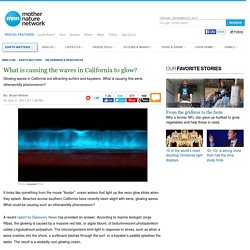

The Tarzan and Jane of the animal world. The former controller of BBC2 doesn’t watch reality TV (“no, not even I’m a Celebrity”) but is unexpectedly mild on the subject.

“I think it’s cheap and cheerful, so who am I to say people shouldn’t watch it? It really costs absolutely nothing to make, whereas if you look at a programme I’m making at the moment about the earth’s Poles, which has been three years in production with 15 camera men living out there for most of the time…” TV has changed a lot from the days the grammar-school and Cambridge-educated young man from Isleworth – the younger brother of actor and director Lord Richard Attenborough – worked as a production assistant at the BBC Alexandra Palace headquarters. “Still, it was thrilling because there were only a dozen people responsible for all the non-fiction programmes in Europe.” When Sir David stepped out from behind the desk to present, his infectious enthusiasm and distinctive tones of hushed awe captivated audiences.
Mammals. Reptiles. Invertebrates. How do cats earn their stripes? It's all in the DNA, as scientists find gene which could solve mystery of animal coat patterns. The real rumble in the jungle: Scientists find elephants 'sing like humans' - but at a frequency so low we can't hear them. By Mark Prigg Published: 18:02 GMT, 2 August 2012 | Updated: 06:59 GMT, 3 August 2012 It may not seem like elephants and Barry White would have much in common.

But it appears that both use bass singing to set the mood. Researchers have found that elephants use an ultrasound rumble – often too low for humans to hear – to keep the herd together and for males to find mates. Elephants employ the same voice mechanism as human singers to generate deep "infrasound" rumbles, scientists found. It allows the animals to communicate over distances of up to six miles.
The low-pitched elephant calls, occupying a frequency range below 20 Hertz, may seem to have little in common with human singing. But researchers have confirmed that both are produced in exactly the same way. Experts had wondered whether, like a cat’s purr, elephant infrasound was generated by muscular 'twitching' movements of the vocal cords. 7 Extinct Animals: Rare Photographs. Last Thylacine yawning: Note the unusual extent to which it was able to open its jaws From panthers and pandas to rhinos and tigers, dwindling animal numbers speak of the need to step up conservation efforts – if it’s not already too late.

As a kind of wake-up call, we decided to take a look at seven extinct species captured on camera. They've got eyes in the back of their head: Researchers create mutant tadpoles with body parts on their tails. Scientists grew new organs by changing bioelectric signals in cellsFurther research planned targeting brain, spinal cord and limbs of tadpole embyos By Nadia Gilani Updated: 21:32 GMT, 8 December 2011 Frankenstein-style creatures, including tadpoles with eyes on their backs and tails, have been created by scientists, it was revealed today.

US researchers have been able to grow new organs in parts of the body where they don't normally grow by changing bioelectric signals in cells. The groundbreaking findings mean that complex organs can be created for transplantation or regenerative therapy, the researchers claim. All-seeing: An eye created by scientists can be seen on this tadpole shown with a red arrow pointing to it The scientists could even pick the type of organ which was created and specify the location by altering the bioelectrical communication between the animal's cells. 'These were cells in regions that were never thought to be able to form eyes. What is causing the waves in California to glow?
It looks like something from the movie "Avatar": ocean waters that light up like neon glow sticks when they splash.

Beaches across southern California have recently been alight with eerie, glowing waves. What could be causing such an otherworldly phenomenon? A recent report by Discovery News has provided an answer. According to marine biologist Jorge Ribas, the glowing is caused by a massive red tide, or algae bloom, of bioluminescent phytoplankton called Lingulodinium polyedrum. Photos of Tiny Animals In People's Hand. There actually AREN'T that many fish in the sea: Rivers and lakes contain 80% of Earth's species - despite covering 2% of surface. By Rob Waugh Updated: 16:51 GMT, 8 February 2012 A team led by Dr John Wiens, from Stony Brook University in New York, studied the biodiversity of ray-finned fish (such as cod, pictured) which make up 96% of all fish species Contrary to popular belief, there's not a lot of fish in the sea, say researchers.

There are far more species in rivers and lakes, say researchers - and the discovery could hint at previous mass extinctions long ago. Most fish alive today are descended from freshwater fish - even although life itself first appeared in the oceans. Despite covering 70% of the Earth's surface, marine environments contain only 20% of all its species. In the new study, scientists made the surprising discovery that freshwater rivers and lakes contain more fish species than salty oceans.